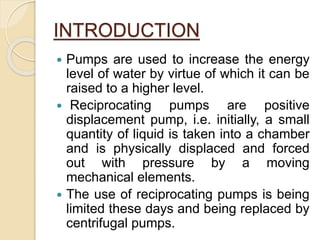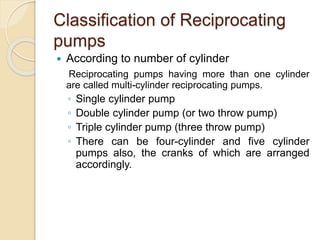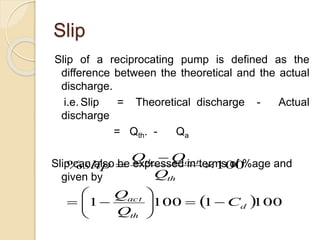This document discusses reciprocating pumps. It begins by explaining that reciprocating pumps are positive displacement pumps that use a piston or plunger moving back and forth to displace water into a higher chamber. While formerly common, reciprocating pumps are now being replaced by centrifugal pumps for most industrial uses due to their higher costs and maintenance. The document then discusses the key components of reciprocating pumps including the cylinder, piston, connecting rod, crank, suction pipe, delivery pipe, and non-return valves. It explains the working principle of both single-acting and double-acting reciprocating pumps and how discharge is calculated. The document concludes by comparing reciprocating and centrifugal pumps.






















